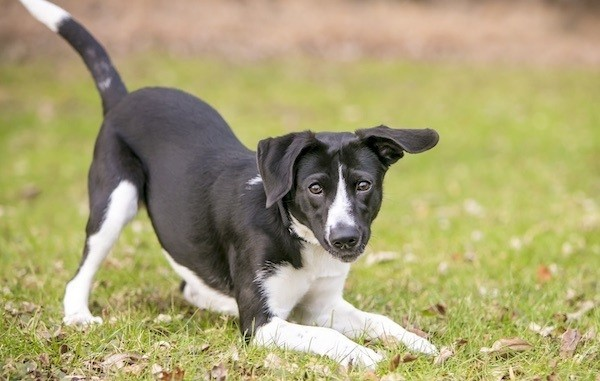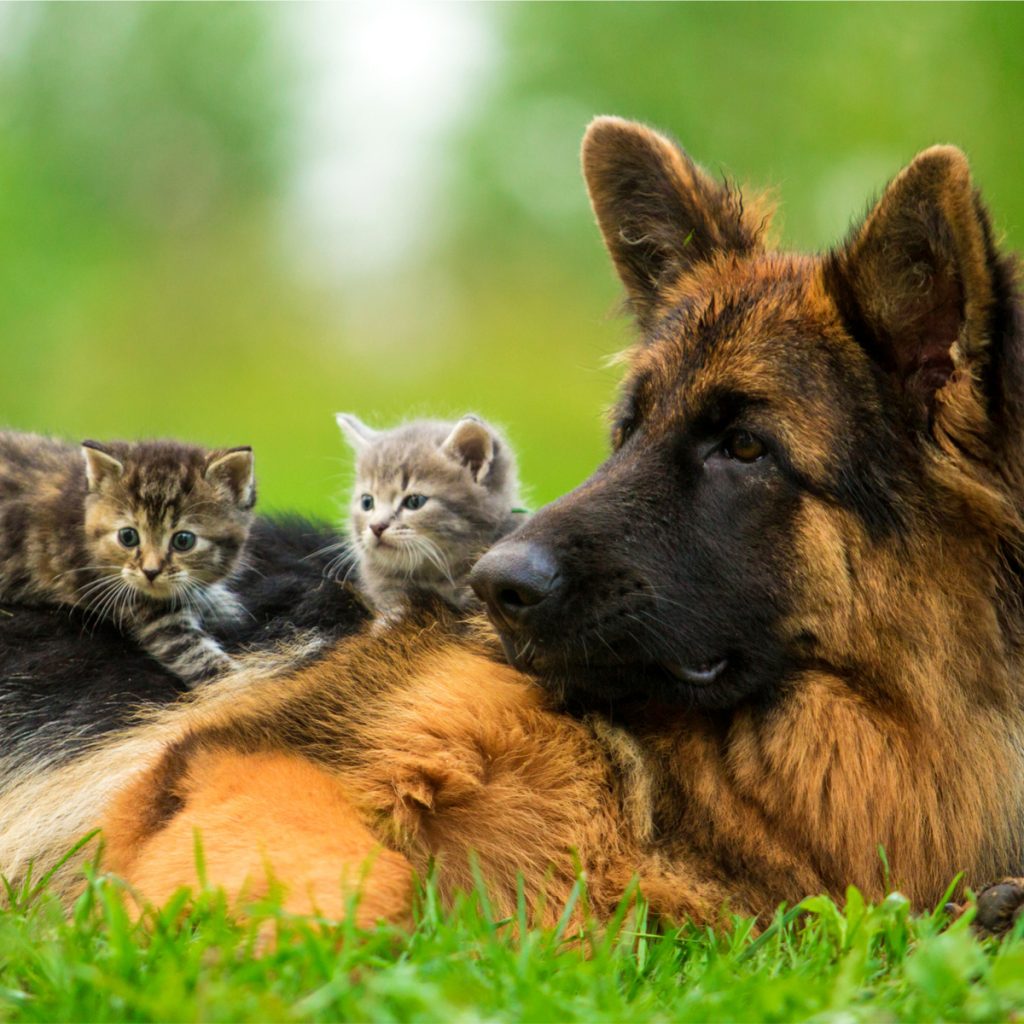We are commonly asked for our advice on when and whether to desex pets. There are a number of things to consider when answering this question. This blog discusses the factors affecting timing of desexing and will help you decide what is right for your pet. There is also a quick reference guide at the end of the blog listing some recommended timings for certain breeds.
Other terms for desexing:
- neutering (both sexes)
- castration (males)
- spay (females)
- ovariohysterectomy (females)
- getting the snip (males, sometimes females too)
- Advice for cats
- Advantages and Disadvantages of neutering dogs
- Diseases that are influenced by the age of neutering
- Practical considerations of neutering: Costs, Home Care
- Quick reference guide for dog breeds
Cats
We recommend neutering all cats at 5-6 months of age.
Female cats can start cycling from 6 or 7m of age. During Autumn and Spring female cats can cycle every 3 weeks. This involves lots of vocal meowing, putting their bum in the air and trying to escape to find a tom cat. If they are allowed to go outside, they will almost certainly become pregnant.
There are no medical reasons to avoid neutering female or male cats.
 Dogs: Advantages & Disadvantages
Dogs: Advantages & Disadvantages
Advantages of neutering females:
- No unwanted litters/puppies
- No oestrus (also known as a season or heat)
- Reduced incidence of mammary cancer
- Eliminates risk of pyometra (infected uterus)
Advantages of neutering males:
- Less testosterone-driven behaviour (escaping to find females in season, urine marking, behaving dominantly)
- No risk of testicular cancer
- Significantly reduced incidence of prostate disease.
Disadvantages of neutering females:
- Increased risk of urinary incontinence
- Tendency for obesity
- Depending on breed – increased incidence of joint diseases and some cancers
Disadvantages of neutering males:
- Tendency for obesity
- Depending on breed – increased incidence of joint diseases and some cancers
Diseases that are influenced by the age of neutering
Mammary cancer: The risk of mammary cancer increases with the number of oestrus cycles in both dogs and cats. In dogs, neutering before the first oestrus has a 99.5% protective effect, neutering before the second oestrus has a 92% protective effect and neutering before the third a 74% protective effect (2). Half of mammary tumours are benign and can be cured with surgery, and half are malignant and may not be curable.
Pyometra: This is a life-threatening infection of the uterus. Treatment involves emergency surgery to remove the uterus, or intensive medical treatment. Approximately one quarter of entire female dogs will develop pyometra by the age of 10 (1).
Urinary Incontinence: Approximately 3% of female dogs develop some degree of urinary incontinence as they get older (6). This presents as leaking urine when sleeping or at rest and can usually be controlled with medication. For some breeds more than 15% of dogs are affected. The risk is higher for dogs over 20kg, and for overweight animals (6, 7). There is evidence that delaying neutering until 12 months old reduces the risk of dogs developing urinary incontinence (7).
Testicular cancer: This cancer occurs in 16-27% of older male dogs (3,4). It is mostly benign and can be cured with surgery. However, it often causes other serious diseases such as prostate enlargement and infection, peri-anal tumours, and perineal hernia. Undescended or cryptorchid testes are 13 times more likely to develop cancer. (This is when the testicle is in the abdomen rather than the scrotum.)
Prostate disease: Prostate enlargement occurs in > 80% of older intact male dogs (4). This can lead to severe infection, painful urinary conditions, and difficulty defecating. It can be treated by castration, but also may require significant additional treatment of the concurrent diseases.
Obesity: Neutering increases the risk of obesity in both cats and dogs (8, 9). Neutered animals have lower calorie requirements but tend to eat more if allowed to. Obesity is linked to many serious health conditions. These include musculoskeletal disease like ruptured cruciate ligaments; endocrine disease including Diabetes, Thyroid disease and Cushing’s disease; lower urinary tract disease such as bladder stones and cystitis, pancreatitis, senility and many cancers (8). Obesity should be a simple problem to control as we are able to regulate what our pets eat. At McDowall Vets we realise how difficult it can be to keep our pets slim in reality! We would love help if you are struggling – please get in contact with us.
Joint disease: Hip Dysplasia, Cruciate Disease and Elbow Dysplasia are commonly seen joint problems in dogs. They lead to pain, lameness and early onset arthritis, and can require advanced surgery to manage. Recent studies indicate that for most large breeds, the risk of developing these problems is reduced by delaying neutering until the bones have developed fully (4,10,11). The recommended age varies with breed. Below is a study with recommended ages for neutering of various breeds (4).
Cancer: We know that neutering reduces the risk of mammary cancer significantly. However, there are a lot of other cancers to consider, and in some breeds neutering early can increase the overall risk of cancer (4, 10, 11). Below are the recommended ages for neutering of various breeds, from a recent large study (4).
Practical considerations: Costs, Home Care
 You should also think about the practicalities of owning an intact male or female dog.
You should also think about the practicalities of owning an intact male or female dog.
Brisbane City and Moreton Bay Councils both give discounted registration fees for neutered animals. Desexing an adult female dog is usually more expensive than desexing at 6 months, due to the increased size of the patient and development of the reproductive system.
An entire male dog will be more likely to seek out females in season, is more likely to escape and become injured or lost. They will display marking behaviour by urinating on (although all dogs of both sexes will mark their territory with urine and spend lots of time sniffing the marks of other dogs!) They may display more aggression to other male dogs, although this is generally confined to situations when a female in season is around.
A commonly held misconception is that dominance and aggression is due solely to testosterone. In fact, this kind of behaviour is very complex and shaped largely by genetics, the experiences and training that the dog encounters. Castration will generally not cure aggression, and dogs of both sexes can display aggression. Please come and see one of our caring vets if you are experiencing problems with aggression from your dog.
Doggy day-care centres and dog walkers are unlikely to look after females in season or entire males.
There are some alternatives to castration in male dogs. A hormone implant can be placed which produces temporary infertility for 6 to 12 months. Please speak to us if you would like more information on this option.
Most entire female dogs will have an oestrus or season every 6 months. The first is generally between 6 and 12 months of age. Each oestrus lasts around 3 weeks. The first sign is usually swelling of the vulva, which is followed by a lightly blood-stained discharge in the first week and a darker bloody discharge in the second week, tapering off in the third. Your dog will also become very interesting for other dogs of both sexes (neutered and intact). She is most likely to accept mating and become pregnant in the second and third week. Her hormones are a powerful attractant to intact males, who may come from far and wide and attempt to break into your garden to find her.
How to manage an oestrus: top tips:
- There will be mess. Your dog will keep herself as clean as she can, but there will still be drops of blood left wherever she is. Consider how you will clean this in the area she lives in.
- Dog Undies or nappies are available to help reduce the mess. A google search will help you locate a style that works for you.
- Make sure your fences are in good condition and high enough to prevent your dog escaping and other dogs entering.
- Avoid the dog park and don’t let your dog off lead. Your dog can still go for walks but try to avoid areas where there are other dogs. Hormones can change the behaviour of your dogs and of other dogs around her.
- Some dogs eat less when they are in season. This is not a concern unless she is displaying signs of illness or stops eating altogether.
So, what do I do??
As you can see, the decision is different for each individual patient. As a general rule, breeds less than 20kg adult weight can be desexed from 5 months, and larger breeds benefit from delaying neutering until 12 months, or after their first season (whichever is later).
All cats should be neutered at 5-6 months old.
Quick Breed Reference Guide
- Females should be neutered 3 months after a season, so may be slightly older than listed
REFERENCES
- A Egenvall, R Hagman, B N Bonnett, A Hedhammar, P Olson, A S Lagerstedt. Breed risk of pyometra in insured dogs in Sweden. J Vet Intern Med. 2001 Nov-Dec;15(6):530-8.
- R Schneider, C R Dorn, D O TAYLOR. Factors influencing canine mammary cancer development and postsurgical survival. J Natl Cancer Inst. December 1969;43(6):1249-61
- Albert Taiching Liao, Pei-Yi Chu, Lih-Sen Yeh, Chung-Tien Lin, Chen-Hsuan Liu. A 12-year retrospective study of canine testicular tumors. J Vet Med Sci. July 2009;71(7):919-23.
- Lowseth LA, Gerlach RF, Gillett NA, Muggenburg BA. Age-related changes in the prostate and testes of the beagle dog. Vet Pathol. 1990;27:347–353.
- Benjamin L. Hart, Lynette A. Hart, Abigail P. Thigpen, and Neil H. Willits. Assisting Decision-Making on Age of Neutering for 35 Breeds of Dogs: Associated Joint Disorders, Cancers, and Urinary Incontinence Vet. Sci., 07 July 2020
- D G O’Neill, A Riddell, D B Church, L Owen, D C Brodbelt, J L Hall. Urinary incontinence in bitches under primary veterinary care in England: prevalence and risk factors. J Small Anim Pract. December 2017;58(12):685-693.
- J K Byron, K H Taylor, G S Phillips, M S Stahl. Urethral Sphincter Mechanism Incompetence in 163 Neutered Female Dogs: Diagnosis, Treatment, and Relationship of Weight and Age at Neuter to Development of Disease. J Vet Intern Med. 2017 Mar-Apr;31(2):442-448.
- Elizabeth M. Lund, DVM, MPH, PhD1 P. Jane Armstrong, DVM, MS, MBA1 Claudia A. Kirk, DVM, PhD2 Jeffrey S. Klausner, DVM, MS1. Prevalence and Risk Factors for Obesity in Adult Dogs from Private US Veterinary Practices. Intern J Appl Res Vet Med 4, No. 2, 2006. 177- 186
- Lund EM, Armstrong PJ, Kirk CA, et al. Prevalence and risk factors for obesity in adult cats from private veterinary practices.Int J Appl Res Vet Med. 2005;3:88–96.
- Gretel Torres de la Riva, Benjamin L Hart, Thomas B Farver, Anita M Oberbauer, Locksley L McV Messam, Neil Willits, Lynette A Hart Neutering dogs: effects on joint disorders and cancers in golden retrievers. PLoS One. January 2013;8(2):e55937.
- Janelle M Belanger, Thomas P Bellumori, Danika L Bannasch, Thomas R Famula., Anita M Oberbauer. Correlation of neuter status and expression of heritable disorders. Canine Genet Epidemiol. January 2017;4(0):6.







